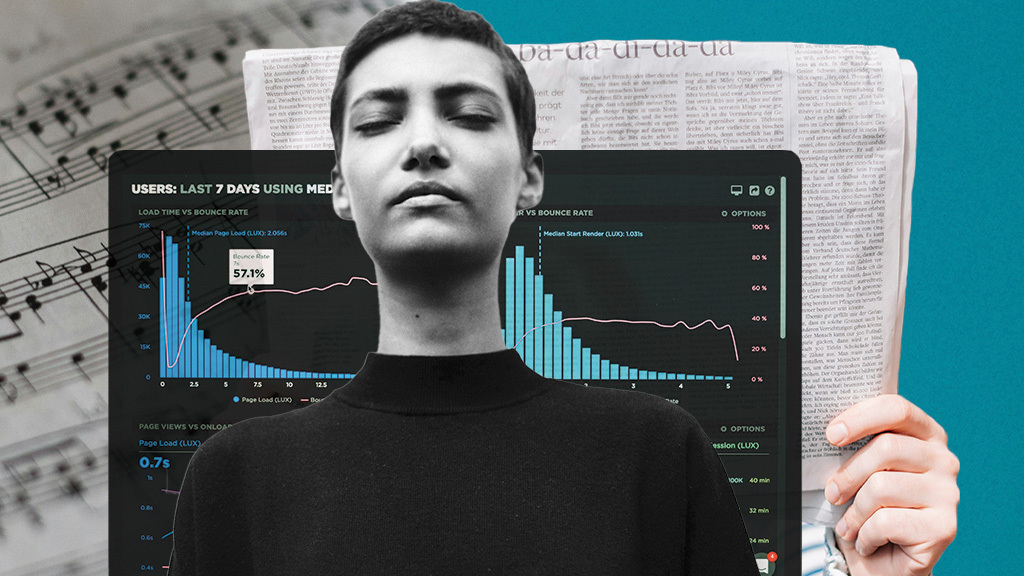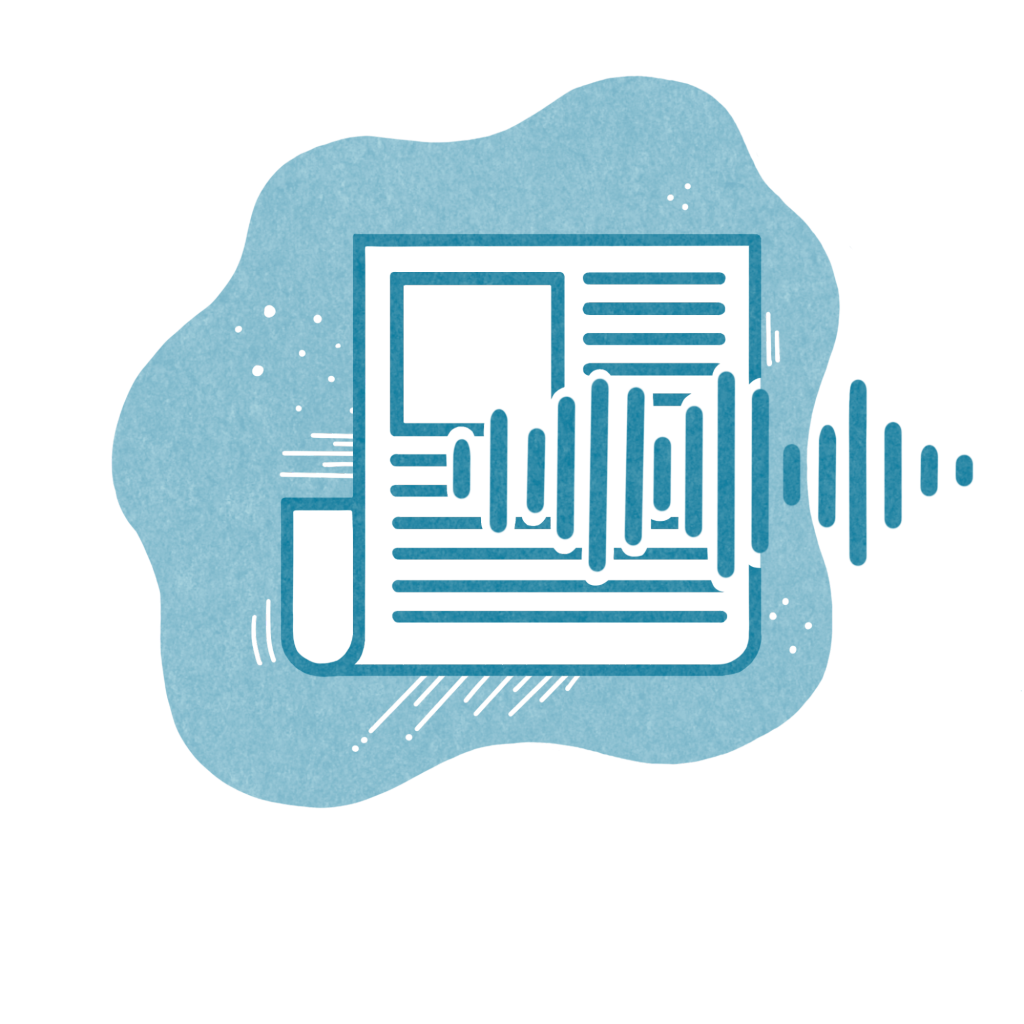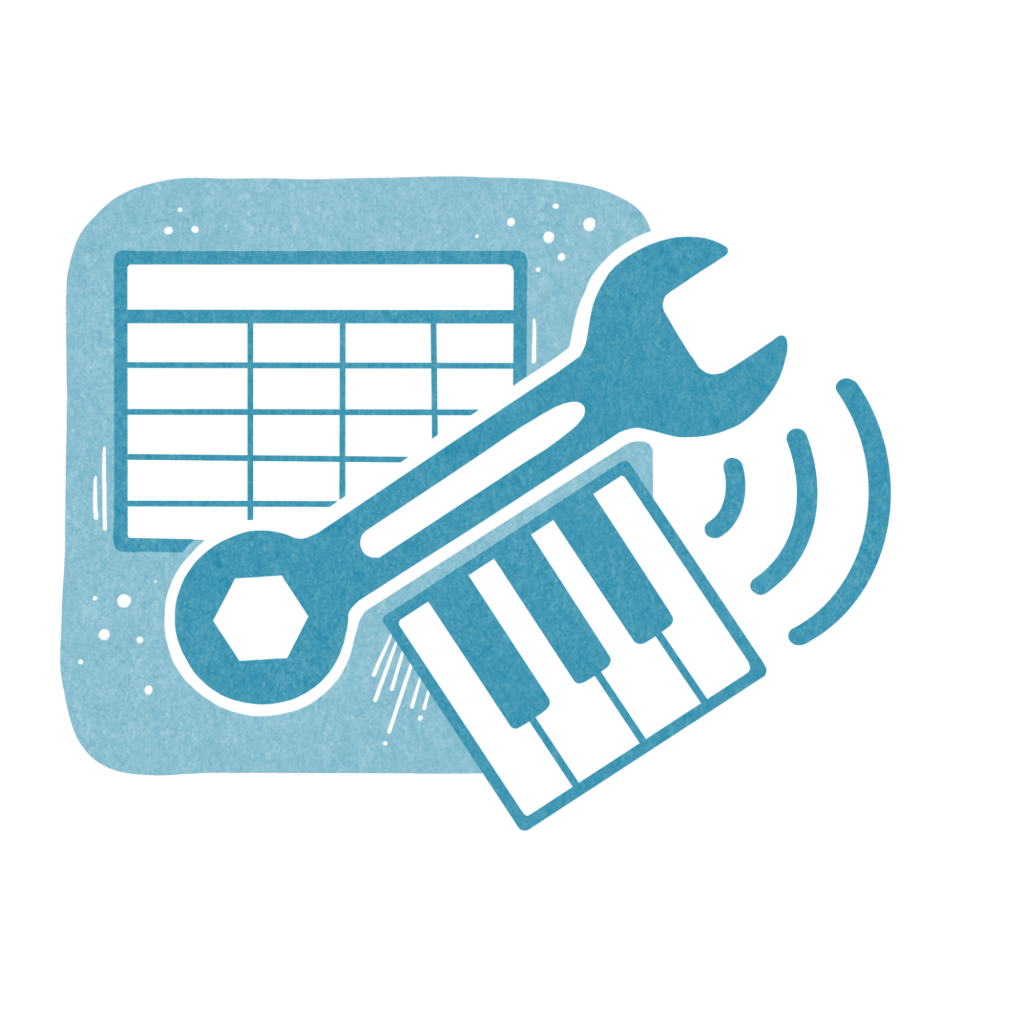
Embracing data-driven audio as a storytelling method
This toolkit will give you the resources you need
In the coming months I will build a web-based resource to help journalists to use data sonification in their work. It will be an easy-to-use resource that gives journalists the tools, step by step guidance and confidence to embrace data-driven audio as a storytelling method.
What is data sonification?
Data sonification is the practice of turning data into sound. Just as data visualization takes information and represents it visually, sonification does this with audio.
Take the most basic example. See the line chart below — it shows the Living Planet Index, an indicator of biodiversity based on population trends of vertebrate species from multiple habitats. The trend line declines gradually from 1970 to 2018. What if we map that movement to pitch, where smaller values are lower notes, and bigger values are higher notes?
Click the “Play chart” button and hear the ‘sonified’ version of this data.
This is only one example. There are innumerable ways one can use this method of “parameter mapping” sonification (correlating numeric values to audio characteristics), and vast potential in the context of journalism.
A missed opportunity in data journalism
With the surge of data-driven reporting and the vast digitization of information, we have become more and more familiar with visual data storytelling tools such as images, charts, graphs, videos, and text. In fact, purely visual formats appear to be the primary method for representing data.
But does this have to be the case? Drumroll please… and enter: data-driven audio.
The integration of auditory display into our day-to-day lives is already ubiquitous — we receive a ping notification on our phone letting us know we’ve received a text; our cars announce a subtle yet urgent alarm when another vehicle gets too close; and our washing machines sing us a ditty when our laundry is done. As humans, our auditory perception systems are constantly parsing an impressive amount of complex information from our environment.
So journalists, why not embrace this modality?
Data sonification has enormous potential in information communication and is especially beneficial to the journalism community in at least two significant ways.
- Accessibility. Expressing data in the form of audio makes data accessible to people who are visually impaired or blind. Journalism can benefit enormously from this by improving audience inclusivity, and breaking beyond its typical reliance on purely-visual modalities.
- Engagement. Data sonification has the potential to spark curiosity and stir emotions within a listener, often eliciting a more powerful reaction than a static visualization can. This improves both audience interest and memory retention with the content.
Duncan Geere and Miriam Quick, two avid practitioners of data sonification and creators of the Loud Numbers podcast, speak to sonification’s potential in data journalism: “…sound and music have the power to not only reach new audiences, but better serve existing audiences by deepening their emotional connection to the story” (DataJournalism.com, 2021).
And we’re not just talking about the application in digital articles. Podcasts and radio programs, which are already made up of verbal expression and sound design, provide the perfect stage for listener-guided sonification as a way of sharing a data trend. As an example, check out this data sonification piece by Jordan Wirfs-Brock, called “What sound does a volatile stock market make?”
Example of the month

“Nine Rounds a Second: How the Las Vegas Gunman Outfitted a Rifle to Fire Faster” from the New York Times (2017). This is one of the more well known examples, and you may have already come across it. This sonification demonstrates the firing speed of weapons used in the 2017 Las Vegas shooting and the 2016 Orlando nightclub shooting, comparing those with the firing rate of a fully automatic weapon. It is startling to hear the closeness in firing speed the Las Vegas gunman’s outfitted rifle comes to an automatic weapon. This piece is poignant because it tackles a highly sensitive topic and conveys the message in a subtle yet urgent way. In this example, the use of sound gives additional clarity that a visualization alone would not.

Tool of the month
For the first data sonification tool I’ll introduce you to, let’s start with one of the most basic and easy-to-use apps out there: TwoTone.
TwoTone is an open-source web tool for generating music from data. It doesn’t require any code; just upload some data of your choice (or select one of the built-in datasets), and adjust parameters like instrument, tempo, and volume. Both playful and practical, it is an ideal way to explore turning data into audio.
Below is an example of TwoTone in action. I’ve selected one of the built-in datasets, called “Honey Production in the USA (1998-2021),” and adjusted the parameters to my liking. As the average price per pound of honey increases over time, the ascending arpeggios correspond proportionally.
TwoTone’s documentation provides useful information about how to create and edit tracks, along with more advanced adjustment options.
Give it a go and let me know what you think!
Call for feedback
Readers, listeners — I’m calling out to you for your thoughts, feedback, and ideas.
Knowing what features of a sonification toolkit would be most useful to you will help me to create a valuable resource for journalists to use in your everyday work. If you’re able, please take a moment to fill out this short feedback survey: “Your Thoughts on Data Sonification, Please.”
References
- Living Planet Index, Latest Results (2023). Zoological Society of London and WWF. https://www.livingplanetindex.org/.
- Weber et al. “Data stories. Rethinking journalistic storytelling in the context of data journalism.” Studies in Communication Sciences 18.1 (2018), pg. 191–206.
- Geere, Duncan and Quick, Miriam (2021, March 10). Making numbers louder: telling data stories with sound. DataJournalism.com. Retrieved from: https://datajournalism.com/read/longreads/data-sonification.
- Wirfs-Brock, Jordan, Ryssdal, Kai, and Fam, Alli (2020, March 31). What sound does a volatile stock market make? Marketplace. Retrieved from: https://www.marketplace.org/2020/03/31/the-sounds-of-a-volatile-stock-market/.
- Buchanan, Larry, Huang, Jon, and Pearce, Adam (2017, October 5). Nine Rounds a Second: How the Las Vegas Gunman Outfitted a Rifle to Fire Faster. The New York Times. Retrieved from: https://nyti.ms/3D8Ie4A.
Cite this article
Walmer, Aura (2024, Aug. 8). Embracing data-driven audio as a storytelling method. Reynolds Journalism Institute. Retrieved from: https://rjionline.org/news/embracing-data-driven-audio-as-a-storytelling-method/
